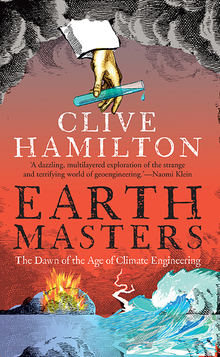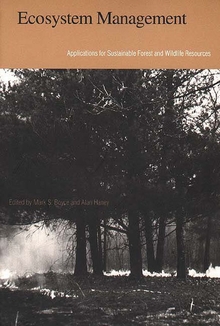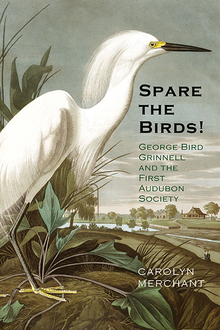Seeing Trees
WARNING
You are viewing an older version of the Yalebooks website. Please visit out new website with more updated information and a better user experience: https://www.yalebooks.com
A History of Street Trees in New York City and Berlin
Sonja Dümpelmann
A fascinating and beautifully illustrated volume that explains what street trees tell us about humanity’s changing relationship with nature and the city
“A deep . . . dive into urban society’s need for—and relationship with—trees that sought to return the natural world to the concrete jungle.”—Adrian Higgins, Washington Post
Winner of the Foundation for Landscape Studies' 2019 John Brinckerhoff Jackson Prize
Today, cities around the globe are planting street trees to mitigate the effects of climate change. However, as landscape historian Sonja Dümpelmann explains, the planting of street trees in cities to serve specific functions is not a new phenomenon. In her eye-opening work, Dümpelmann shows how New York City and Berlin began systematically planting trees to improve the urban climate during the nineteenth century, presenting the history of the practice within its larger social, cultural, and political contexts.
A unique integration of empirical research and theory, Dümpelmann’s richly illustrated work uncovers this important untold story. Street trees—variously regarded as sanitizers, nuisances, upholders of virtue, economic engines, and more—reflect the changing relationship between humans and nonhuman nature in urban environments. Offering valuable insights and frameworks, this authoritative volume will be an important resource for years to come.
“A deep . . . dive into urban society’s need for—and relationship with—trees that sought to return the natural world to the concrete jungle.”—Adrian Higgins, Washington Post
Winner of the Foundation for Landscape Studies' 2019 John Brinckerhoff Jackson Prize
Today, cities around the globe are planting street trees to mitigate the effects of climate change. However, as landscape historian Sonja Dümpelmann explains, the planting of street trees in cities to serve specific functions is not a new phenomenon. In her eye-opening work, Dümpelmann shows how New York City and Berlin began systematically planting trees to improve the urban climate during the nineteenth century, presenting the history of the practice within its larger social, cultural, and political contexts.
A unique integration of empirical research and theory, Dümpelmann’s richly illustrated work uncovers this important untold story. Street trees—variously regarded as sanitizers, nuisances, upholders of virtue, economic engines, and more—reflect the changing relationship between humans and nonhuman nature in urban environments. Offering valuable insights and frameworks, this authoritative volume will be an important resource for years to come.
Sonja Dümpelmann is associate professor of landscape architecture at Harvard’s Graduate School of Design and author or editor/co-editor of several books, including the 2015 John Brinkerhoff Jackson Book Prize–winner Flights of Imagination: Aviation, Landscape, Design.
“In this imaginative and deeply researched work, Sonja Dümpelmann truly helps us to ‘see trees’ in the careful chronologies she develops and the political messages that these trees represented within their times and places.”—Keith Morgan, Boston University
"In Seeing Trees the distinguished scholar Sonja Dümpelmann employs her linguistic ability, knowledge, and imaginative use of the archival resources in both Berlin and New York to extend the boundaries of landscape history.”—Kenneth Helphand, University of Oregon, author of Defiant Gardens: Making Gardens in Wartime
“Sonja Dümpelmann distills a rich and textured history of street trees—the people involved, technical approaches employed, and the way street trees served as both a polemic and as a point of unification for people.”—Susan Herrington, author of Landscape Theory in Design
“This meticulously researched and beautifully illustrated book chronicles the multifaceted identities of trees—as food, fuel, shelter, and defense—and offers us new ways of reading social history into the natural world.”—Jennifer S. Light, Massachusetts Institute of Technology
“A signal contribution to the history of landscape design and city planning. Writing with narrative verve, Sonja Dümpelmann turns rigorous scholarship into a fascinating story of time and place for both the academic and general reader.”—Elizabeth Barlow Rogers, President, Foundation for Landscape Studies
“Street trees are increasingly appreciated because of their ecological importance. Sonja Dümpelmann’s brilliant historical analysis reveals the fascinating cultural background beyond plantings, with striking parallels between Berlin and New York.”—Ingo Kowarik, Technical University of Berlin
"Sonja Dümpelmann weaves arboriculture, landscape design, and urban planning into an intricate, original environmental history, wherein the urban tree serves as both symbol and sentinel for the interpretation of modern urbanism in all its complexity."—Matthew Gandy, University of Cambridge
“Sonja Dümpelmann chronicles how trees have long defined the public realms of New York City and Berlin, from the glorious elms that lined Brooklyn’s Eastern Parkway to the eponymous lindens of Unter den Linden.”—Adrian Benepe, The Trust for Public Land
“Seeing Trees is landscape history at its best—perceptive and beautifully written, comparative across space and time, observant of the material world and the world of ideas, and in dialogue with a variety of different disciplines.”—Christof Mauch, Director, Rachel Carson Center for Environment and Society, LMU Munich
“A fascinating and original deep dive into the surprisingly contested terrain of street trees. Dümpelmann uses the prisms of feminism, race, politics (Marxist trees!), economics, science, public health, and art to illuminate how essential street trees are to the well-being of cities, and how difficult it is to treat them as worthy of investment and care.”—Jill Jonnes, author of Urban Forests: A History of Trees and People in the American Cityscape
“Fascinating and well-illustrated . . . a compelling narrative . . . Dümpelmann brings an accessible writing style and admirable curiosity . . . authoritative and original . . . she extends the boundaries of landscape history . . . Seeing Trees will serve as an important reference point for urban and landscape history in the future.”—Mark Favermann, Arts Fuse
“Fascinating.”—M. J. Stone, Choice
“Dümpelmann tracks the history of the modern street tree . . . A deep, scholarly dive into urban society’s need for—and relationship with—trees that sought to return the natural world to the concrete jungle.”—Adrian Higgins, Washington Post
"This book provides a rich narrative of street trees in society, complementing other books written about the history of urban greening. . . . The book is a significant contribution to the multifaceted story of urban ecological infrastructure. It would be suitable as a textbook in urban studies and landscape architecture, and a great read for those interested in arboriculture, urban ecology, and community planning."—Jane Futrell Winslow, Journal of Urban Affairs
“A distinctive and welcome approach to urban history.”—Sara E. Levine, The Metropole
"The book makes a convincing alternative case from the more traditional approach of "nature versus culture" dichotomy. Instead, Dümpelmann portrays street trees as an integral part of the urban fabric. Professionals in forestry, urban development, and landscape architecture, as well as readers with a strong interest in the history of the urban landscape, will find this book enlightening as we move towards resilient cities of tomorrow."—Lumi Kirk, Garten + Landschaft
Seeing Trees has won the 2019 John Brinckerhoff Jackson prize, sponsored by the Foundation for Landscape Studies
Winner of the 2022 Elisabeth Blair MacDougall Book Award sponsored by the Society of Architectural Historians
Finalist for the 2019 Julia Ward Howe award for non-fiction, sponsored by The Boston Authors Club
ISBN: 9780300225785
Publication Date: January 8, 2019
Publication Date: January 8, 2019
336 pages, 7 x 10
20 color + 120 b/w illus.
20 color + 120 b/w illus.








